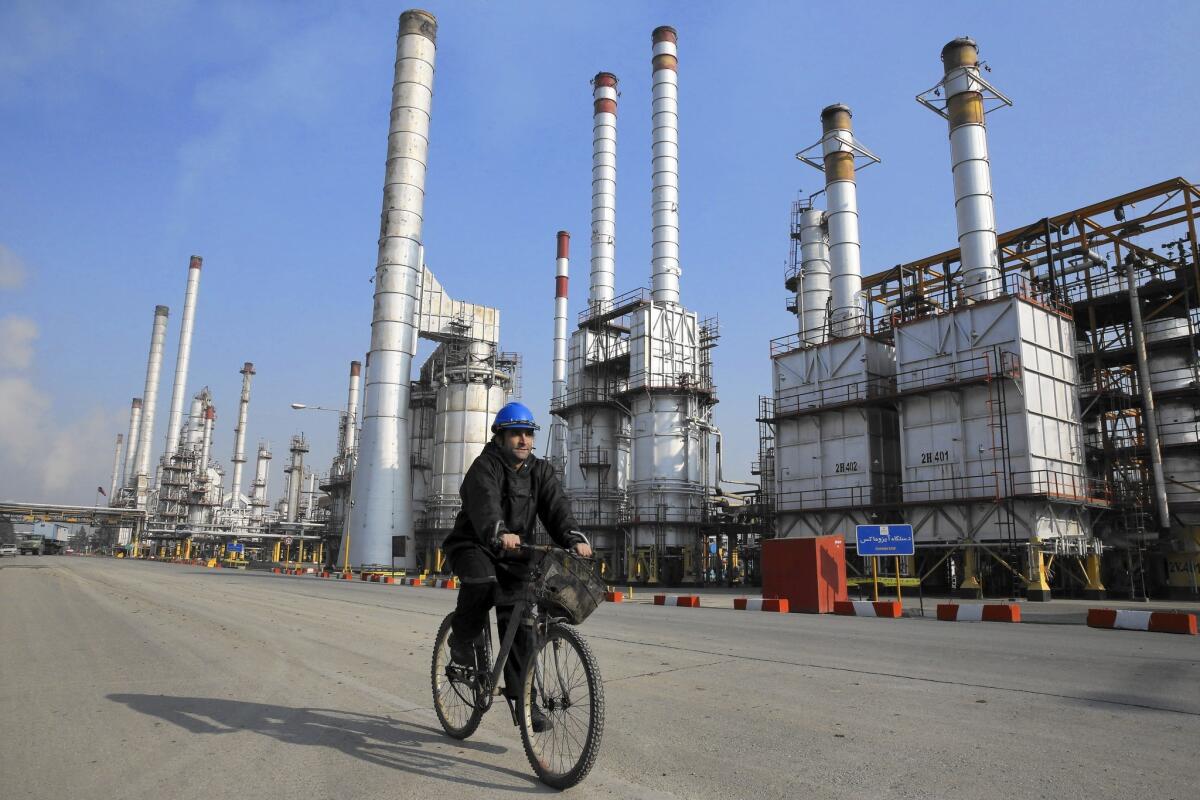Is it time to get back into oil and gas stocks?

Since topping more than $100 a barrel two years ago, the price of oil has been down — and just about out, costing both big and small investors billions across the globe.
But there are flickering signs that maybe the worst is over for King Crude as the price for the two dominant oil benchmarks — Brent and West Texas intermediate — have each climbed above $40 a barrel after dipping below $30 two months ago.
On Friday, Brent crude rose 58 cents, or 1.3%, to $45.11 a barrel, while the benchmark U.S. crude rose 55 cents, or 1.3%, to $43.73.
Is it time to get back into oil and gas stocks? Or is it still too treacherous?
“I do believe that this is probably a pretty good time to step in for any well-diversified portfolio,” said Richard Ina, managing director-wealth management with UBS Financial Services in San Diego. His group sees Brent trading at $55 a barrel within a year.
Robert Rapier, chief energy analyst for Investing Daily, said the outlook is better over the long haul than it is short-term.
“A lot of these companies have cut costs so much that they can make the kinds of returns at $70, $80 [a barrel] that they were making at $100,” Rapier told the San Diego Union-Tribune. “And a lot of the marginal producers have been squeezed out. It’s not going to take $100 oil to generate the kind of cash they were generating before.”
Last weekend, oil ministers from Russia and OPEC nations met in Doha, Qatar, amid rumors they would freeze production levels in an effort to boost oil’s international price. But the meeting fell apart and no freeze materialized.
Investors braced for the stock market to take a dive when it opened Monday, but that didn’t happen.
Why not? Because while the Doha meeting didn’t produce an agreement to curb rising supplies, some other events did, such as an oil workers’ strike in Kuwait, pipeline problems in Nigeria and Kurdistan, and continued political unrest in Libya that has reduced production in that country by 1 million barrels a day.
Plus battered U.S. producers have curtailed production and rig counts are at their lowest levels since the 1940s.
“For a long-term investor, I think it’s a perfect time to invest because I think the market sentiment is now shifting,” Rapier said.
In a recent note, Simmons and Co., one of the largest investment banks specializing in the energy industry, said, “The asymmetry for oil prices is higher rather than lower over the next two years.”
But the oil market has always been unpredictable and vulnerable to geopolitical factors that can alter the market virtually overnight. And there are other indications that oil prices could sink again.
Because of last year’s nuclear agreement with the Obama administration and other countries, Iran is producing more oil for the global market. Iran is expected to increase production by as much as 1 million barrels a day, putting further downward pressure on prices.
Saudi Arabia, the dominant member of the Organization of the Petroleum Exporting Countries, is said to have the ability to quickly ramp up production should it want to counter the ambitions of Iran, its chief rival in the region. That could make things tenuous for short-term investors.
“Watch global inventories — they are still very high,” Rapier said. “That’s the downside risk.”
Ina advised investors to look into companies with strong balance sheets that are not as sensitive to short-term swings.
“They’re the ones that can weather these storms when every five or seven years oil decides to get volatile again.”
Energy companies with strong dividend histories help too.
“With many of these oil companies paying anywhere from 3.25% to as high as 4.5% in dividends on an annual basis, it’s a great way to integrate that into an overall portfolio, especially for individuals who are looking to live off of some of that income,” Ina said.
Rob.nikolewski@sduniontribune.com
ALSO
SunEdison files for bankruptcy protection
Volkswagen to take $18.2-billion hit on emissions scandal
How regulators plan to use pay rules to rein in risk-taking by big banks






